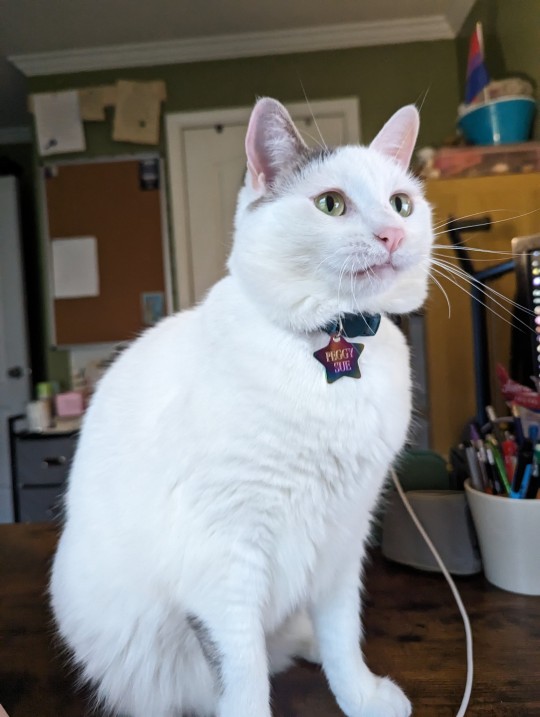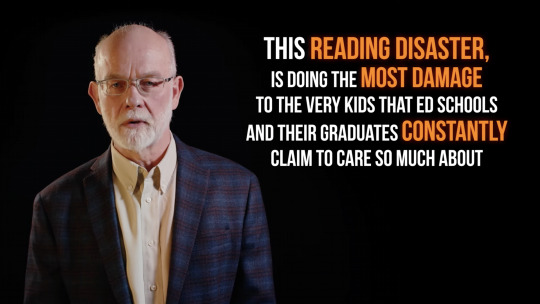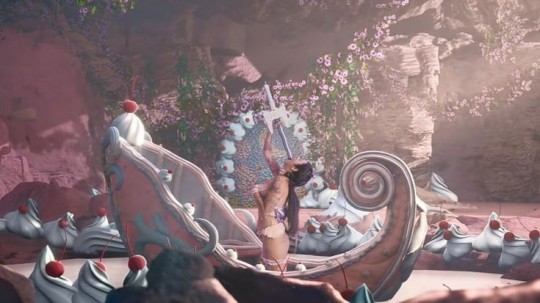#k 12 education
Text

The tsunami of female power shattered patriarchal constraints, blew right past equality, and rocketed into a new realm of superiority and dominance.
#future is female#girlboss#alpha female#k 12 education#feminism#gynarchy#matriarchy#girls rule#female power
152 notes
·
View notes
Text

Trilogy tour starts in 30 days are you going? 🌟
#the trilogy tour#portals melanie martinez#k 12 melanie martinez#portals#melanie littlebodybigheart#melaine martinez#melanie martinez edit#melanie martinez#crybaby#melanie k12#mel#melanie martinez lyrics#melanie martinez gif#melanie icons#melanie#melanie martinez icons#melanie martinez gifs#melanie martinez music#rip cry baby#rip crybaby#crybaby melanie martinez#melanie crybaby#cry baby#after school ep#k 12 aesthetic#k 12 album#k 12 movie#k 12 education#k 12
77 notes
·
View notes
Text




I'm laughing, I'm crying
It feels like I'm dying
#spotify#melanie littlebodybigheart#melanie martinez#crybaby#melanie k12#portals#portals album#2016 tumblr#k 12 melanie martinez#k 12 film#k 12 album#k 12 movie#k 12 education#k 12 aesthetic#after scool era#after school ep#portals melanie martinez#melanie portals
81 notes
·
View notes
Text
Sci-fi books are rare in school even though they help kids better understand science
by Emily Midkiff, Assistant Professor of Teaching, Leadership, and Professional Practice at the University of North Dakota

Claudia Wolff
Science fiction can lead people to be more cautious about the potential consequences of innovations. It can help people think critically about the ethics of science. Researchers have also found that sci-fi serves as a positive influence on how people view science. Science fiction scholar Istvan Csicsery-Ronay calls this “science-fictional habits of mind.”
Scientists and engineers have reported that their childhood encounters with science fiction framed their thinking about the sciences. Thinking critically about science and technology is an important part of education in STEM – or science, technology, engineering and mathematics.
Complicated content?
Despite the potential benefits of an early introduction to science fiction, my own research on science fiction for readers under age 12 has revealed that librarians and teachers in elementary schools treat science fiction as a genre that works best for certain cases, like reluctant readers or kids who like what they called “weird,” “freaky” or “funky” books.
Of the 59 elementary teachers and librarians whom I surveyed, almost a quarter of them identified themselves as science fiction fans, and nearly all of them expressed that science fiction is just as valuable as any other genre. Nevertheless, most of them indicated that while they recommend science fiction books to individual readers, they do not choose science fiction for activities or group readings.
The teachers and librarians explained that they saw two related problems with science fiction for their youngest readers: low availability and complicated content.

Why sci-fi books are scarce in schools
Several respondents said that there simply are not as many science fiction books available for elementary school students. To investigate further, I counted the number of science fiction books available in 10 randomly selected elementary school libraries from across the United States. Only 3% of the books in each library were science fiction. The rest of the books were: 49% nonfiction, 25% fantasy, 19% realistic fiction and 5% historical fiction. While historical fiction also seems to be in low supply, science fiction stands out as the smallest group.
When I spoke to a small publisher and several authors, they confirmed that science fiction for young readers is not considered a profitable genre, and so those books are rarely acquired. Due to the perception that many young readers do not like science fiction, it is not written, published and distributed as often.
With fewer books to choose from, the teachers and librarians said that they have difficulty finding options that are not too long and complicated for group readings. One explained: “I have to appeal to broad ability levels in chapter book read-aloud selections. These books typically have to be shorter, with more simple plots.” Another respondent explained that they believe “the kind of suppositions sci-fi is based on to be difficult for younger children to grasp. We do read some sci-fi in our middle grade book club.”
A question of maturity
Waiting for students to get older before introducing them to science fiction is a fairly common approach. Susan Fichtelberg – a longtime librarian – wrote a guide to teen fantasy and science fiction. In it, she recommends age 12 as the prime time to start. Other children’s literature experts have speculated whether children under 12 have sufficient knowledge to comprehend science fiction.
Reading researchers agree that comprehending complex texts is easier when the reader has more background knowledge. Yet, when I read some science fiction picture books with elementary school students, none of the children struggled to understand the stories. The most active child in my study often used his knowledge of “Star Wars” to interpret the books. While background knowledge can mean children’s knowledge of science, it also includes exposure to a genre. The more a reader is exposed to science fiction stories, the better they understand how to read them.
A matter of choice
Science fiction does not need to include detailed science or outlandish premises to offer valuable ideas. Simple picture books like “Farm Fresh Cats” by Scott Santoro rely on familiar ideas like farms and cats to help readers reconsider what is familiar and what is alien. “The Barnabus Project” by the Fan Brothers is both a simple escape adventure story and a story about the ethics of genetic experimentation on animals.

The good news is that elementary school students are choosing science fiction regardless of what adults might think they can or cannot understand. I found that the science fiction books in those 10 elementary school libraries were checked out at a higher rate per book than all of the other genres. Science fiction had 1-2 more checkouts per book, on average, than the other genres.
Using the lending data from these libraries, I built a statistical model that predicted that it is 58% more likely for one of the science fiction books to be checked out in these libraries than one of the fantasy books. The model predicted that a science fiction book is over twice as likely to be checked out than books in any of the other genres. In other words, since the children did not have nearly as many science fiction books to choose from, their readership was heavily concentrated on a few titles.
Children may discover science fiction on their own, but adults can do more to normalize the genre and provide opportunities for whole classes to become familiar with it. Encouraging children to explore science fiction may not guarantee science careers, but children deserve to learn from science fiction to help them navigate their increasingly high-tech world.
#science fiction#reading#science fiction books#education#k 12 education#literacy#science literacy#science fiction literature
32 notes
·
View notes
Text
DEATH - Melanie Martinez




#twitter#icons#packs#cry baby#melanie martinez#crybaby#k 12 album#melanie icons#cry babies#k 12#melanie lbbh#melanie martinez gif#melanie gifs#rip crybaby#crybby#k 12 education#k12#k 12 melanie martinez#k 12 movie#k 12 era#k 12 aesthetic#after school ep#PORTALS#DEATH#lookscreen
59 notes
·
View notes
Text
hello internet friends in my phone, are any of you substitute teachers? what is your average day like?
I usually don't post about career stuff on here but I'm a college adjunct professor rn (which doesn't pay shit) while also in a program to be a school media specialist and I know I'm only in my first semester but I'm gonna want a job in the school district in like just over a year, so I figure I need to start that networking somewhere and why not as a sub? I teach dual enrollment students rn so I'm most comfy with the high school age group & that's where I ultimately want to work as a media specialist, but for the sake of wanting to work hours for $$ and also wanting to network in many schools, I might also put my name in for elem and middle (assuming I apply and get the job, etc.) I'll also need to spend practicum hours at school media centers at all levels so if I can get to meet people at all levels as a sub that would be good too I think (and there's the eventuality that an elem or middle school in the district might need a media specialist sooner than a high school so I might need to work there for a few years)
I would also welcome insight from full time school teachers, I've done some research on the wider internet of course but what do you specifically want out of a sub? what do the lesson plans you leave look like? tell me all the things pls
here's a pic of my cat as payment for your knowledge

9 notes
·
View notes
Text
In general, kids' attendance and learning can suffer when students don't have access to a school nurse. "You're going to see more absences," she said, citing a study from the Journal of School Nursing that found students with illnesses or injuries were sent home 18% of the time when evaluated by an unlicensed school employee while only 5% went home after being seen by a school nurse.
[...] Though there is no federal law requiring schools to have nurses on staff, the Centers for Disease Control and Prevention recommends at least one full-time nurse for every 750 students enrolled — but most states are missing the mark by miles. School nurses in California have one of the heaviest workloads in the country with a student-to-school-nurse ratio of 2,410 students for every nurse, according to the Public Policy Institute of California.
According to research organization Child Trends, California, along with 34 other states and the District of Columbia, requires schools to employ school nurses. Of those, 12 set required nurse-to-student ratios. Seven states encourage schools to have nurses on staff. Eight states don't have mandates on the books.
7 notes
·
View notes
Text
I've previously posted these, but I thought I'd bring them back.
The entire "Why Colleges Are Becoming Cults" playlist - or the combined single video - is worth a watch, but there's two episodes of the series that are particularly relevant.
Part 12, "The Reading Debacle" covers the failure of the US education system to teach kids to read, while Part 11, "The Knowledge Gap," includes some primer info regarding how language and knowledge is acquired, which feeds into why the reading failure creates students who are ill prepared for college. For example, the higher education sector spends $7b each year on remedial classes to bring college students up to the level that their K-12 schooling failed to.
Together, these paint a portrait of the failures of US education, particularly in terms of underprivileged and minority students.
And why highly ideological programming which claims to address the underperformance of these underserved students (such as lowering standards) by the same sector that pathologically cannot even teach them to read, should never be taken seriously.
youtube
"The Knowledge Gap" - Dr. Lyell Asher
youtube
"The Reading Debacle" - Dr. Lyell Asher


#Dr. Lyell Asher#Lyell Asher#Why Colleges Are Becoming Cults#higher education#affirmative action#reading#literacy#illiteracy#K-12 education#K 12 education#failure of education#charter schools#religion is a mental illness
12 notes
·
View notes
Text

#wallpaper#foryou#foryopage#melanie martinez#melanie k12#melandicons#crybaby#k 12 education#k12schools
11 notes
·
View notes
Text
A new record for Math Prize for Girls wins
Twelfth grader Jessica Wan three-peats, as MIT hosts the 15th competition for female middle and high school math enthusiasts.
Sandi Miller | Department of Mathematics

Florida Virtual School senior Jessica Wan was the winner of the 15th Math Prize for Girls (MP4G) annual contest for female-identifying contestants, held Oct. 6-8 at MIT.
She scored 17 out of 20 questions, which added up to make Wan the MP4G’s most successful contestant in its history; she also won the contest last year and in 2019, as an eighth grader. (MP4G paused for two years at the height of the Covid-19 pandemic.) Because Wan had won $82,000 in previous years, she was limited to only earning $18,000 this year by contest rules placing a $100,000 lifetime limit on winnings.
The 262 U.S. and Canadian middle and high school contestants took a two-and-a-half-hour exam that featured 20 multistage problems in geometry, algebra, and trigonometry. Here's an example of one of the questions:
The frame of a painting has the form of a 105” by 105” square with a 95” by 95” square removed from its center. The frame is built out of congruent isosceles trapezoids with angles measuring 45 degrees and 135 degrees. Each trapezoid has one base on the frame’s outer edge and one base on the frame’s inner edge. Each outer edge of the frame contains an odd number of trapezoid bases that alternate long, short, long, short, etc. What is the maximum possible number of trapezoids in the frame?
Hosted by the MIT Department of Mathematics and sponsored by the Advantage Testing Foundation and global trading firm Jane Street, the MP4G weekend culminated in an awards ceremony held at the Marriott in Kendall Square, Cambridge, Massachusetts. MIT electrical engineering and computer science (EECS) Professor Regina Barzilay gave the Maryam Mirzakhani keynote lecture, “Uncovering Mysteries of Life Sciences with Machine Learning.” The event was emceed by MP4G alumna In Young Cho, a quantitative trader from Jane Street who placed third in 2010, and featured a performance by the MIT Logarhythms.
In second place was eighth grader Selena Ge of Jonas Clarke Middle School in Lexington, Massachusetts, with a score of 14 to earn $20,000. She also was awarded a Youth Prize of $2,000 as the highest-scoring contestant in ninth grade or below.
The next four winners were junior Hannah Fox of Proof School in California, who received $10,000 with a score of 12; with scores of 11 each, $4,000 was awarded to sophomores Shruti Arun of Cherry Creek High School in Colorado, Catherine Xu of Iowa City West High School in Iowa, and senior Miranda Wang of Kent Place School in New Jersey. The next 12 winners received $1,000 each.

The top 41 students are invited to take the 2023 Math Prize for Girls Olympiad at their schools. Canada/USA Mathcamp also provides $250 merit scholarships to the top 35 students who enroll in its summer program.
Keep reading.
Make sure to follow us on Tumblr!
4 notes
·
View notes
Text

This course gives an introduction about Yoga, history and basics. It also shows a demonstration for performing asanas and basic procedures for doing kriyas correctly, as well as the correct postures.
2 notes
·
View notes
Text
The reading comprehension isnt just bad on tumblr and twitter. It's bad everywhere.
For many years I've known that over 1/2 of Adults in the USA cannot read a book written above an 8th grade level. I've been trying to figure out why this is. Surely this many people don't have an actual learning disability, do they?
Well two weeks ago I stumbled on this podcast, and then this related article.
The reason so many people don't know how to read, is because we have not actually been teaching them how to read.
Oh, Teachers think they are teaching kids how to read, but in reality it's all a buncha baloney based on a long debunked theory on how children learn how to read. And it's been widespread curriculum in school districts rich and poor for decades.
Needless to say, I am nothing short of absolutely horrified.
Now, I'm a bit of a conspiracy theorist. And by conspiracy theorist, I mean I've done extensive study, research, and observation on the increasingly divisive and hostile political climate if the Not So United States Of America (spoiler alert, its been going on for decades, not years). I know about the GQP plan to privatize public education. It is extremely unlikely this was a part of that.
The curriculum was originally meant to only be used with the poorest of readers to help them keep up with their classmates, and it was a massive oversight to apply it accross the board. It happened to have the unfortunate side effect of contributing to extremism and cultish mentality. That isn't to say that educated people cannot become extremists. No one is immune to Authoritarian Thought Control Tactics. But having good reading comprehension and internet literacy skills lowers your likelihood of falling prey to misinformation and brainwashing.
The GQP didn't start this. But they do want to keep it this way. "They don't want an educated populace capable of critical thought, sitting around the kitchen table realizing how badly they're getting fucked!" -George Carlin
Okay. So.... What now?
Now that we know about the problem, we can do something about it. Fortunuately, we know how kids learn to read, which means this is a fixable problem. If you are in or near a school district that uses the "Three Cueing System" as their reading curriculum, go to district board meetings. Make petitions. Sign petitions. Call your local representitives. Fight like hell for effective evidence based reading curriculum based on science. Please. The kids need it.
#Not to be anti-fascist on main but...#books and reading#school#university#studyblr#english teacher#teaching#student#education#k 12 education#Teacher#college#Books#bookblr#book community#Reading#The more queue know
4 notes
·
View notes
Text

Credits: pink_pinkpiecreations (on Instagram)
#k 12 aesthetic#k 12 album#melanie k12#k 12 melanie martinez#k 12 movie#k 12 education#k 12#portals melanie martinez#portals#melaine martinez#melanie littlebodybigheart#melanie martinez edit#melanie martinez#crybaby#mel#melanie martinez gifs#melanie martinez lyrics#melanie martinez gif#melanie icons#melanie#melanie martinez music#melanie martinez icons#melanie lbbh#melanie martinez fanart#fanart#melanie martinez art#rip cry baby#crybaby melanie martinez#rip crybaby#cry baby
121 notes
·
View notes
Text




Pack it, box it, flip it, top it
With a bow, tie ribbon, stop it
#spotify#melanie littlebodybigheart#melanie martinez#crybaby#melanie k12#portals#portals album#2016 tumblr#k 12 melanie martinez#k 12 film#k 12 aesthetic#k 12 album#k 12 movie#k 12 education#portals melanie martinez#melanie portals#after scool era#after school ep
69 notes
·
View notes
Text
There’s a huge difference between teaching religion and practicing/preaching religion in schools.
Religion is a part of social studies and history that should be taught to children, as it’s involved in, and in many times is the basis of, huge world events and conflicts. We should absolutely be exposing children to the various different religious practices throughout the world and giving them quality information on what religion is and isn’t so as not to be influenced by the misinformation spread by religious extremists and bigots.
However, acknowledging and teaching about religion in school should absolutely not include the act of praying or persuading. Children shouldn’t have to swear their allegiance to their country every morning under a god they don’t have the information to decide whether they believe in, or listen to their teacher or coach preach and pray before they learn or play sports. This is completely different from and is outside the realm of education.
So, when I say religion should be kept out of schools, I don’t mean it shouldn’t be taught.
#I was just trying to nap#but this popped into my head#education#school#k 12 education#religion#religious#religion in school#keep religion out of school#separation of church and state#children#youth#college#studyblr#study break#study#psychology#neuroscience#books#fellowship#internship#lab#university#library#library and information science#master of information#christianity#islam#judaism#world religions
6 notes
·
View notes
Text
melanie via instagram.
#twitter#icons#packs#cry baby#melanie martinez#crybaby#k 12 album#melanie icons#cry babies#k 12#melanie lbbh#melanie martinez gif#melanie gifs#rip crybaby#crybby#k 12 education#k12 education#k12#icons k12#melanie k12#k 12 icons#k 12 melanie martinez#k 12 movie#after school#after school ep
45 notes
·
View notes